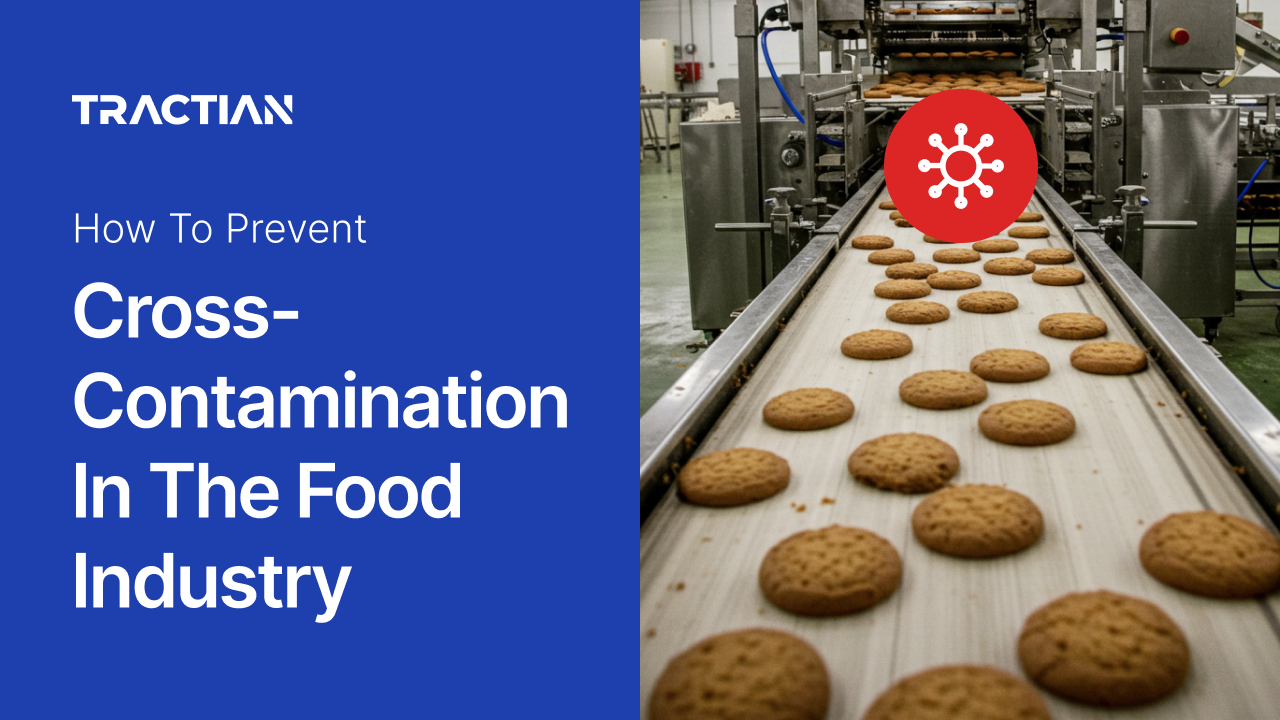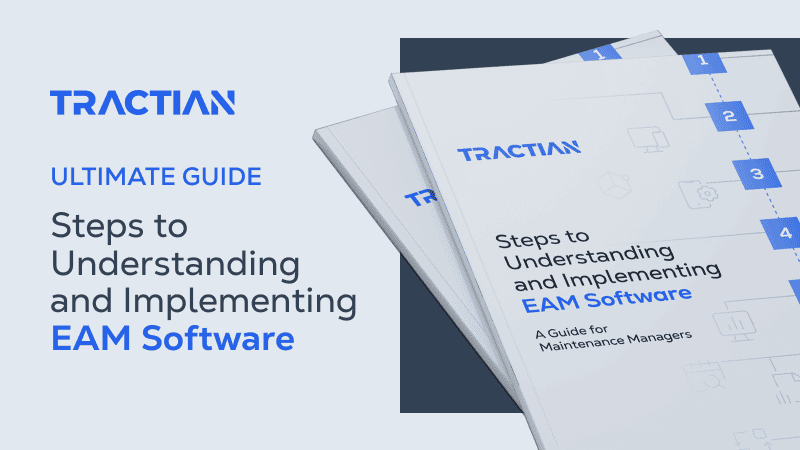Cross-contamination is one of the biggest risks in food manufacturing today. Beyond regulatory non-compliance, it can trigger widespread health crises, product recalls, and inflict long-term damage to a brand’s reputation.
It’s not a rare event either. According to the World Health Organization (WHO), foodborne diseases affect roughly 600 million people each year, leading to 420,000 deaths globally. That’s one in ten people falling ill from something that should’ve been preventable.
To unravel how small process failures snowball into massive public health issues, we need to understand what cross-contamination really means in an industrial setting and what it takes to prevent it.
What Is Cross-Contamination?
Cross-contamination happens when harmful substances are unintentionally transferred from one place to another.
It can happen in two ways:
- Direct contamination, where one food or surface directly comes into contact with another.
- Indirect contamination, which happens through a third-party vehicle, like hands or cleaning equipment.
Contamination can happen at any stage, even while sanitizing equipment between production runs.
Cross-contamination falls into three main categories:
- Biological contamination: Caused by microorganisms like bacteria, viruses, and parasites.. Think Salmonella or E. coli, which thrive in improperly handled environments and can lead to serious health consequences.
- Chemical contamination: This involves harmful substances such as cleaning residues or pesticides that make their way into food products. Even trace amounts can cause chronic health issues or acute poisoning.
- Physical contamination: This includes foreign objects like r plastic fragments that accidentally end up in food products, often due to equipment failure or poor handling procedures.
What Causes Cross-Contamination in the Food Industry?
When it comes to food manufacturing, cross-contamination often starts small, but it spreads fast. Understanding the most common sources it comes from is the first step toward controlling them:
Poor Hand Hygiene
If operators don’t wash their hands properly or don’t use gloves correctly, they end up transferring pathogens from surface to surface. This is especially dangerous in lines handling both raw and finished products.
Shared Tools and Surfaces
Using the same tools or workstations without sanitizing between processes is one of the fastest ways to spread contaminants. A slicing machine that handles raw meat in one shift and packaged foods in the next creates a huge contamination risk without proper cleaning.
Improper Storage
Raw ingredients stored alongside ready-to-eat products create invisible risks. For example, if liquids from uncooked items drip onto finished goods, those items are now contaminated.
Lack of Training
Even with all the right procedures, untrained personnel can still compromise safety. If your team doesn’t understand why hygiene protocols matter or when they should happen, compliance goes out the door.
Poorly Maintained Equipment
Residue buildup in hard-to-clean areas creates ideal environments for microbial growth. And if cleaning and maintenance schedules aren’t followed precisely, those hidden contaminants easily make their way into every production run.
Pest Intrusion
Rodents and insects are more than just a nuisance, they’re high-risk contamination vectors. They move between waste areas and processing zones, carrying bacteria and debris that compromise any surface they touch.
Negative Effects of Cross-Contamination in the Food Industry
When cross-contamination hits your facility, it compromises the entire operation, creating an avalanche of issues like:
Risk to Consumer Health
Cross-contamination introduces harmful materials into finished products, potentially causing serious foodborne illnesses for end consumers.
Regulatory and Legal Exposure
Contaminated food leads to immediate compliance breaches. Regulatory bodies like the FDA or USDA demand traceability, and if a plant can't prove when, how, and why an incident occurred, the result is often fines, product recalls, or even shutdowns.
Financial and Operational Losses
A single cross-contamination event may result in thousands of units being scrapped, not to mention the downtime and overtime costs tied to investigation and cleanup.
Reputational Damage
No matter how robust your operation is, one cross-contamination incident damages trust. Recovering consumer confidence and rebuilding brand reputation can take years, and for some, it never happens.
Best Practices to Prevent Cross-Contamination
To avoid these scenarios, your preventative processes have to be more than a checklist, they need to be a part of your facility’s daily rhythm. Here are a few practices that can make a difference in your plant:
1. Standardize Cleaning and Sanitization Protocols
Cleaning should be a controlled procedure, down to the last detail. Equipment, tools, and surfaces must be sanitized between changeovers and after contact with high-risk ingredients.
Define intervals. Track every action. And validate that your cleaning processes are actually removing contaminants.
2. Separate by Flow, Space, and Time
Whenever possible, raw and finished product lines should be prepared and stored separately. If that’s not possible, stagger production schedules to separate them by time, and never reuse equipment or utensils without full sanitation in between.
3. Enforce Personal Hygiene Protocols
Strict handwashing, glove use, and clothing change procedures are mandatory. Before moving between areas with raw and ready-to-eat foods, employees should always reset their PPE and hygiene standards.
4. Label and Store Materials Properly
Separating products in storage matters just as much as on the line. Raw materials should never be stored above or beside finished goods. Use sealed containers, color-coded bins, and dedicated storage zones to prevent accidental exposure.
5. Monitor High-Risk Zones
Critical control points like mixing tanks should be monitored in real time. Cross-contamination in areas like these can quickly spiral. Preventive maintenance and sensor-based alerts go a long way in catching early deviations.
6. Train and Retrain Constantly
Compliance lives with your frontline staff. When workers understand why each protocol exists, they're more likely to follow through.
7. Train for Pattern Recognition
Contamination doesn’t always announce itself. That’s why your team needs to be trained not just on protocols, but on spotting early warning signs like residue buildup in hard-to-clean components, or unexplained shifts in product integrity.
8. Tighten Maintenance Around Risk
Preventive maintenance should be tailored to the contamination risk each asset presents. Anything in direct contact with food needs strict inspection and sanitation intervals. That includes replacing components before wear creates hygiene gaps, not after.
But more advanced teams go further than just schedules.
They use condition monitoring to track performance in real time. This shift from timed to condition-based interventions helps spot contamination risk before they shows up in a batch.

Understanding the Regulatory Landscape
In the United States, food safety is the law, making compliance non-negotiable.
Both the FDA and the enforce a range of federal regulations that govern everything from raw material handling to facility sanitation and traceability.
For manufacturers looking to prevent cross-contamination, it’s not just about knowing the rules, it’s about operationalizing them.
Codex Alimentarius and Global Alignment
The Codex Alimentarius from the FAO and WHO sets internationally recognized food safety standards. And while it’s not legally binding, Codex principles influence FDA regulations and global trade practices. US manufacturers exporting to global markets often use these standards to benchmark compliance readiness.
Food Safety Management Systems (FSMS)
Modern food plants are expected to run with a validated Food Safety Management System in place. This is a structured framework that ties production, sanitation, and maintenance into a single, traceable routine.
Under the FSMA (Food Safety Modernization Act), risk-based preventive controls are required for most registered facilities. This includes having a formal hazard analysis plan and written corrective actions for potential contamination points.
Good Manufacturing Practices (GMPs)
GMPs form the baseline for every FDA-regulated facility. These guidelines define what safe manufacturing looks like in practice.
For maintenance and operations teams, GMPs require:
- Keeping tools and equipment in sanitary condition
- Ensuring lubrication doesn’t come into contact with food
- Documenting all interventions that might affect product safety
Non-compliance with GMPs can result in FDA Form 483 observations, and even full recalls.
HACCP: The Backbone of Preventive Control
HACCP (Hazard Analysis and Critical Control Points) is the globally accepted method for identifying and managing food safety risks, and it's mandatory for many categories of food processing under both FDA and USDA oversight.
A HACCP plan requires teams to:
- Identify potential hazards
- Define control measures
- Establish monitoring procedures
- Verify that controls work effectively.
Once the plan is in place, every step must be documented.
How Tractian’s CMMS Helps Prevent Cross-Contamination in the Food Industry
Cross-contamination isn’t just about what happens on the production line, it’s about what’s missed in between.
Tractian’s CMMS scattered, undocumented routines into structured, traceable workflows that food manufacturers can rely on.
Structure That Keeps Contamination Risks Under Control
Tractian’s CMMS makes standard operating procedures impossible to ignore. It transforms tribal knowledge into AI-generated checklists that can be accessed directly from smartphones, even without WiFi. That means every technician follows the same verified steps, every time. No guesswork, and no shortcuts.
Need to track cleaning after allergen changeovers? Want full traceability on equipment used for raw vs. ready-to-eat production? It’s all in your system, timestamped, logged, and ready to show in any audit.
Preventive Plans That Actually Get Executed
Instead of relying on memory, teams use Tractian to create preventive maintenance schedules that enable safe operations, every time.
Every process is tied to an asset and visible in one shared calendar, so no steps are missed. And when a task is skipped or delayed? The system flags it.
From Downtime Recovery to Proactive Risk Control
Tractian’s CMMS is so much more than a checklist. It rewires your SOPs from the ground up, making the intersection between maintenance and safety stronger than before.
By connecting performance signals to automated tasks and alerts, Tractian helps food manufacturers move from reactive cleanup to proactive contamination control.
Traceability That Stands Up to Any Audit
Whether you're preparing for an SQF, BRCGS, or FDA audit, documentation is non-negotiable. With Tractian, every action teams take is fully documented and linked to technician IDs, timestamps, and checklists.
How Tractian’s CMMS Works
Tractian’s CMMS brings structure to your most important routines. It starts by organizing what needs to be done, assigning the right technician, setting clear priorities, and locking critical sanitation and inspection tasks into the schedule.
On the floor, execution is tracked in real time. Teams follow digital checklists, log tasks, and attach part usage straight from their phones.
But the real advantage comes after tasks are done.
Over time, routines become more consistent, traceable, and aligned with regulatory demands.



